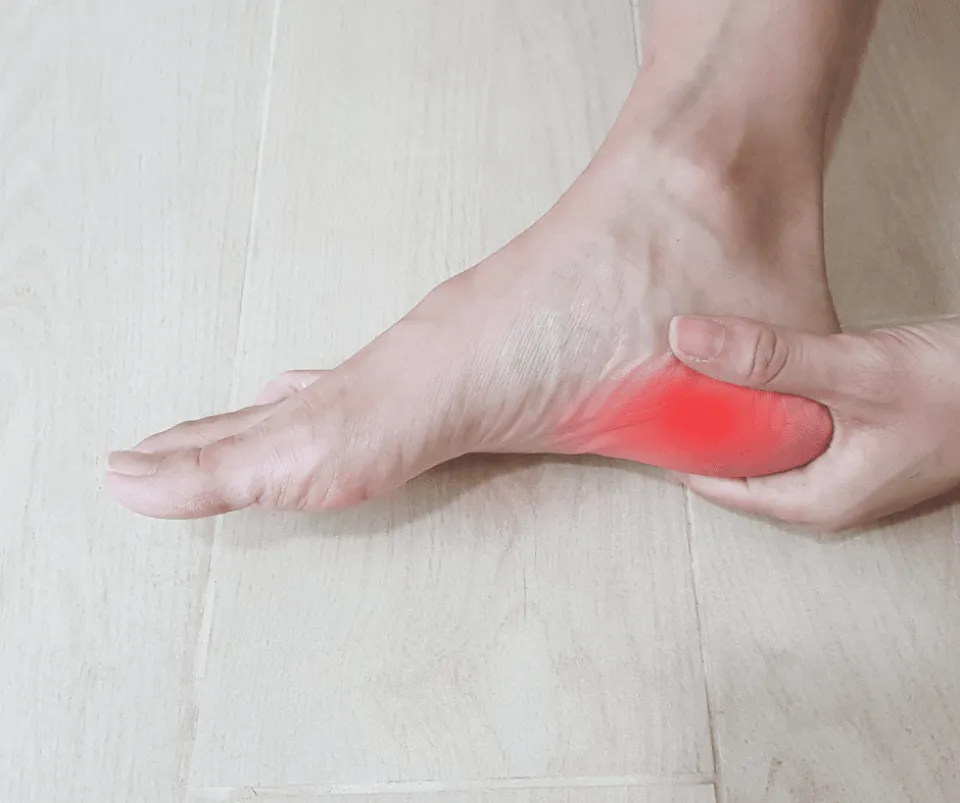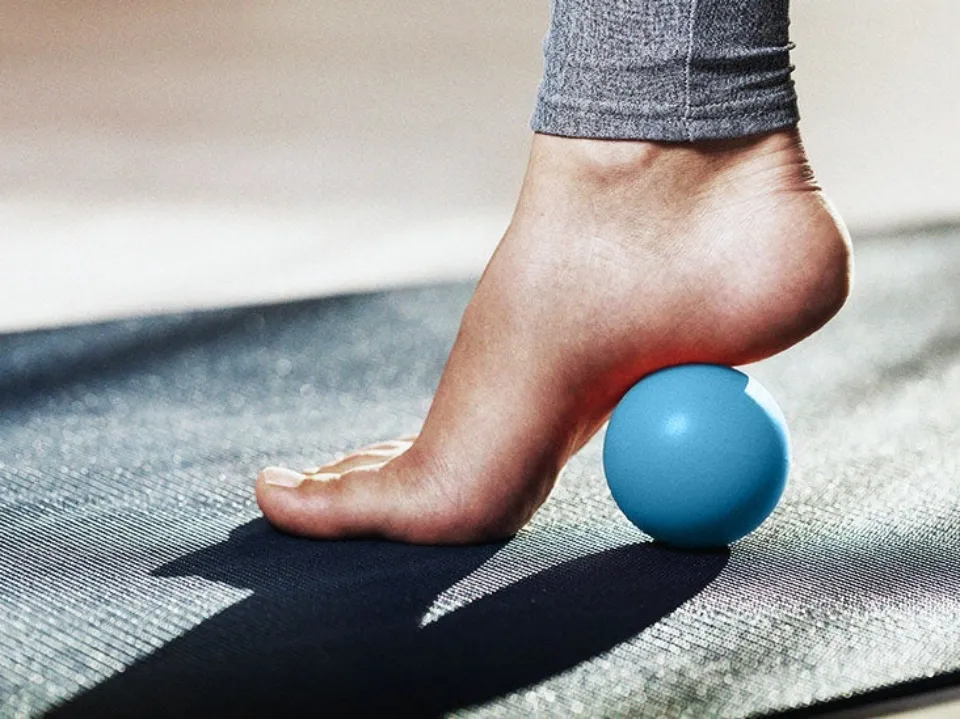What is Plantar Fasciitis? One of the most typical causes of heel pain is plantar fasciitis (PLAN-tur fas-e-I-tis).
Plantar fasciitis is caused when you overuse or put too much stress on your feet. Plantar fasciitis is typically treatable at home with over-the-counter drugs, icing, rest, and stretching.
The information provided in this article on plantar fasciitis will answer all of your questions.
What is Plantar Fasciitis?
Plantar fasciitis is inflammation in the plantar fascia in your foot. It is the most typical source of heel pain.
From your heel to the ball of your foot and your toes, a strong, fibrous attachment (like a ligament), known as the plantar fascia, runs. It is elastic like a strong rubber band. The arch on the bottom of your foot is formed by the plantar fascia, which also binds the bones in your foot together.
Plantar fasciitis happens when your plantar fascia is overused or stretched too far. Your plantar fascia may swell in response to anything that harms it.
Walking or using your foot hurts because of this inflammation. Most people experience plantar fasciitis in one foot at a time, but it’s possible for it to affect both your feet at once.
You Might Also Like:
- Are Hey Dudes Good for Plantar Fasciitis?
- Are Skechers Good for Plantar Fasciitis?
- Are Doc Martens Good for Plantar Fasciitis?
Plantar Fasciitis Symptoms

Plantar fasciitis typically causes a stabbing pain in the bottom of your foot near the heel.
The pain is typically at its worst when you take your first few steps after waking up, though it can also be brought on by prolonged standing or rising from a chair.
Common Causes of Plantar Fasciitis
Plantar fasciitis is caused by straining the part of your foot that connects your heel bone to your toes (plantar fascia).
Sometimes the cause of this is unclear.
You may be more likely to get plantar fasciitis if you:
- Are 40 to 60 years of age
- Recently started exercising on hard surfaces
- Exercise with a tight calf or heel
- Overstretch the sole of your foot during exercise
- Recently started doing a lot more walking, running or standing up
- Wear shoes with poor cushioning or support
- Are very overweight
How is Plantar Fasciitis Treated?
You can usually manage plantar fasciitis with at-home treatments and over-the-counter (OTC) medicine.
Your healthcare provider will suggest options for relieving your symptoms and supporting your feet to reduce the chances you’ll experience plantar fasciitis again in the future.
The most common treatments for plantar fasciitis include:
- Over-the-counter NSAIDs: NSAIDs (such as aspirin, ibuprofen, and naproxen) lessen inflammation and pain. Never take NSAIDs for more than 10 days straight without consulting a doctor.
- Rest: For at least a week (if possible), refrain from engaging in the activity that triggered your plantar fasciitis or playing sports.
- Icing your foot: Apply 10 to 15 minutes of ice to your foot twice daily. To reduce inflammation, roll a frozen water bottle along the bottom of your foot while covering it with a thin towel to protect your skin.
- Wearing supportive shoes: Put on supportive, sturdy footwear. Never put on flip-flops, sandals, or any other flat footwear without an integrated arch support. Walking barefoot is not advised.
- Orthotics or shoe inserts: You can put extra arch support in your shoes by adding inserts. Insoles that are already made and available over the counter or custom orthotics that are made to precisely fit your feet are the two options your provider will recommend.
- Immobilization: Your foot will stay in place and your plantar fascia will relieve pressure if you wear a walking boot (also known as a walking cast or a pneumatic cam walker) for a few weeks. How long you will need to wear a boot will be specified by your provider.
- Massaging and stretching: You will be shown stretches and massage methods you can use on your foot and calf muscles by your medical professional or a physical therapist.
- Corticosteroids: Drugs used to treat inflammation include corticosteroids. Your medical professional may administer a corticosteroid (like prednisone) via injection into your plantar fascia.
- Platelet rich plasma (PRP): PRP injections are frequently used to treat and mend wounds.
- Extracorporeal pulse activation technology (EPAT): Shockwave therapy, or EPAT, is a type. For the purpose of boosting blood flow to your plantar fascia, your healthcare professional will use focused acoustic waves (sound waves). This helps it heal more quickly.
- Percutaneous needle tenotomy: A needle will be inserted by your doctor into your plantar fascia during a percutaneous tenotomy. Your body’s increased blood flow to the area will encourage your plantar fascia’s capacity to heal itself.
How Can I Prevent Plantar Fasciitis?
The best way to prevent plantar fasciitis is to avoid overusing your feet. In general:
- Stretch both before and after working out.
- After engaging in vigorous activity or exercise, give your feet time to rest and recover.
- Dress in sturdy footwear.
- Avoid barefoot travel on hard surfaces.
- Every six to nine months (or after you’ve walked or run between 250 and 500 miles in them), you should switch out your sneakers.
If you have a health condition that makes you more likely to develop plantar fasciitis, you might not be able to prevent it.
Final Words on Plantar Fasciitis
Plantar fasciitis is the most common cause of heel pain. If pain in your heel or foot doesn’t go away on its own after a week, consult a doctor.
They’ll assist you in locating at-home remedies to lessen the pain and swelling in your foot.
Finding out you have to miss a week (or more) of your preferred sport or activity is never fun. Remain off the court or field for a moment, though.
If you put too much strain on your foot before it has fully recovered, you risk re-injuring your plantar fascia.
FAQs
How Do You Know If You Have Plantar Fasciitis?
Pain at the front or middle of the heel bone is one of the symptoms at the bottom of the foot.
Does Plantar Fasciitis Go Away?
However, it may take longer than a year for the pain to go away after developing plantar fasciitis.
Is Walking Good for Plantar Fasciitis?
Walking might even exacerbate plantar fasciitis, necessitating a longer course of treatment.



